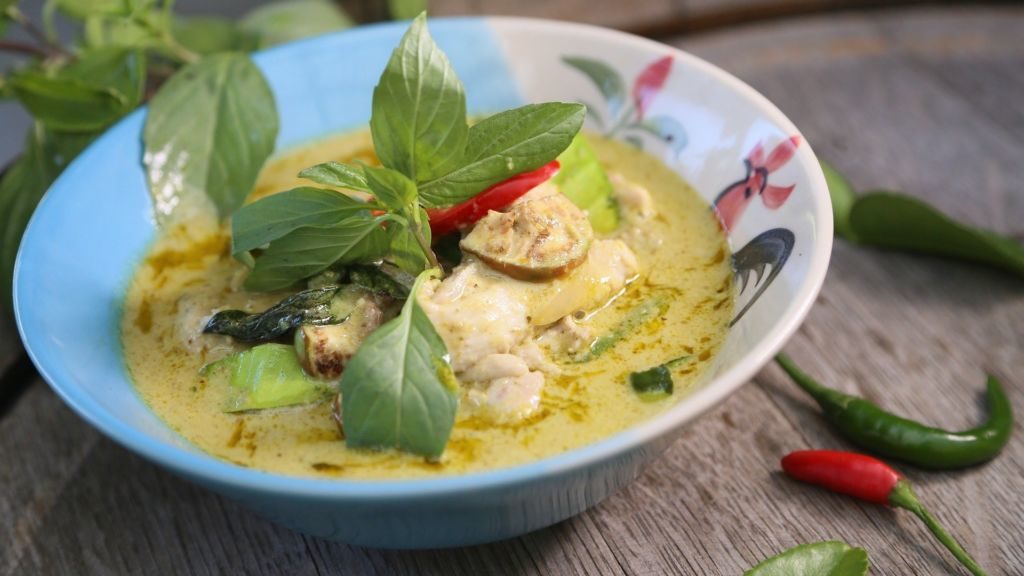The word curry is as much as an enigma as the concoction of spices that make up the powdered blend or paste we buy in grocery stores. When exotic spices became prized possessions in bustling European cities in the 18th century, English colonists recorded, imported, and recreated ragout stews and soups in various Asian countries. One of which is the Land of a Thousand Smiles, Thailand.
The problem? There’s no standard recipe for a curry mix (e.g. compare an aromatic Thai Curry dish to a spicy Indian Curry). And while the powder we purchase stand loyal to more Middle Eastern tastes, Thai spices hit differently.
What makes Thai curry so good?
When we talk about Thai Curry, it all starts with the intense blend of spices that make up its paste. Hot chilies, lemongrass, ginger, garlic, cumin, coriander, turmeric, shallot, and shrimp paste are thrown into a mortar and are gently crushed into a flavorful mush.
From there, different regions of Thailand made their own versions.
Red Curry (kreung gaeng phet daeng)
Named after the 20 red chilies in the thick broth, its curry paste is partnered with beef, salmon, or a variety of vegetables—and it works! Chefs also crush garlic, shallots, blue ginger, and lemongrass for an added kick, mixing in coconut milk for a thicker sauce. This dish is popular among vegetarians who want a spicy dish without red meat.
If not 20 pieces of red chili, modern chefs use chili powder or tomato sauce, offering a way to enjoy the dish minus the heat.
Green Curry (kreung gaeng keo wahn)
This curry takes a sweet turn, as the most popular curry among the three. Its vibrant color comes from fresh coriander (or cilantro), kaffir lime, basil, and green chilies. An addition of krachai and turmeric add to the sweetness, as well!
This tangy sweetness works well with chicken, beef, or fish dumplings, adding their own flavors to the sauce.
Yellow Curry (nam prik gaeng karee)
Similar to Indian Curry, turmeric powder gives the dish its golden-yellow hue. With coriander seeds and cumin to add to the blend, this sauce is the mildest among the three. Adding coconut cream and chilies amp up the taste, though.
While it is typically served with vegetables, this sauce can also be cooked with seafood.
Aside from the obvious nutritional value from the vegetables, the curry paste itself is packed with antioxidants. Turmeric is used to treat inflammation and pain, and is also recommended to help prevent cancer and to combat Alzheimer’s disease.
The mixture of spices also aids digestion, lowers blood pressure, and calms down your stomach. What better way to improve your health than to enjoy a steaming bowl of curry?
How to get your hands on curry?
It’s a good thing that Metro Manila is filled with homey Thai restaurants you can dine at (or better yet, have them delivered to your place). Here are some that can quench your curry cravings:
- Jatujak
- Soi
- Basil
- Black Canyon
With its intricate history and flavorful evolution, curry not only offers different colors to taste but also a list of benefits that heal the heart (quite literally).
For more of Thai cuisine, type in your address in the foodpanda app and we’ll be happy to share recommendations to satisfy your curry cravings!
Featured image by Huahom from Pixabay
JOYCE CLARAVALL | Contributing Editor
A lover of bacsilog, cheese, and hotpot, Joyce harbors a love for meaningful moments with good friends and good food. She believes in saving the best for last so the pizza crust always comes first.
